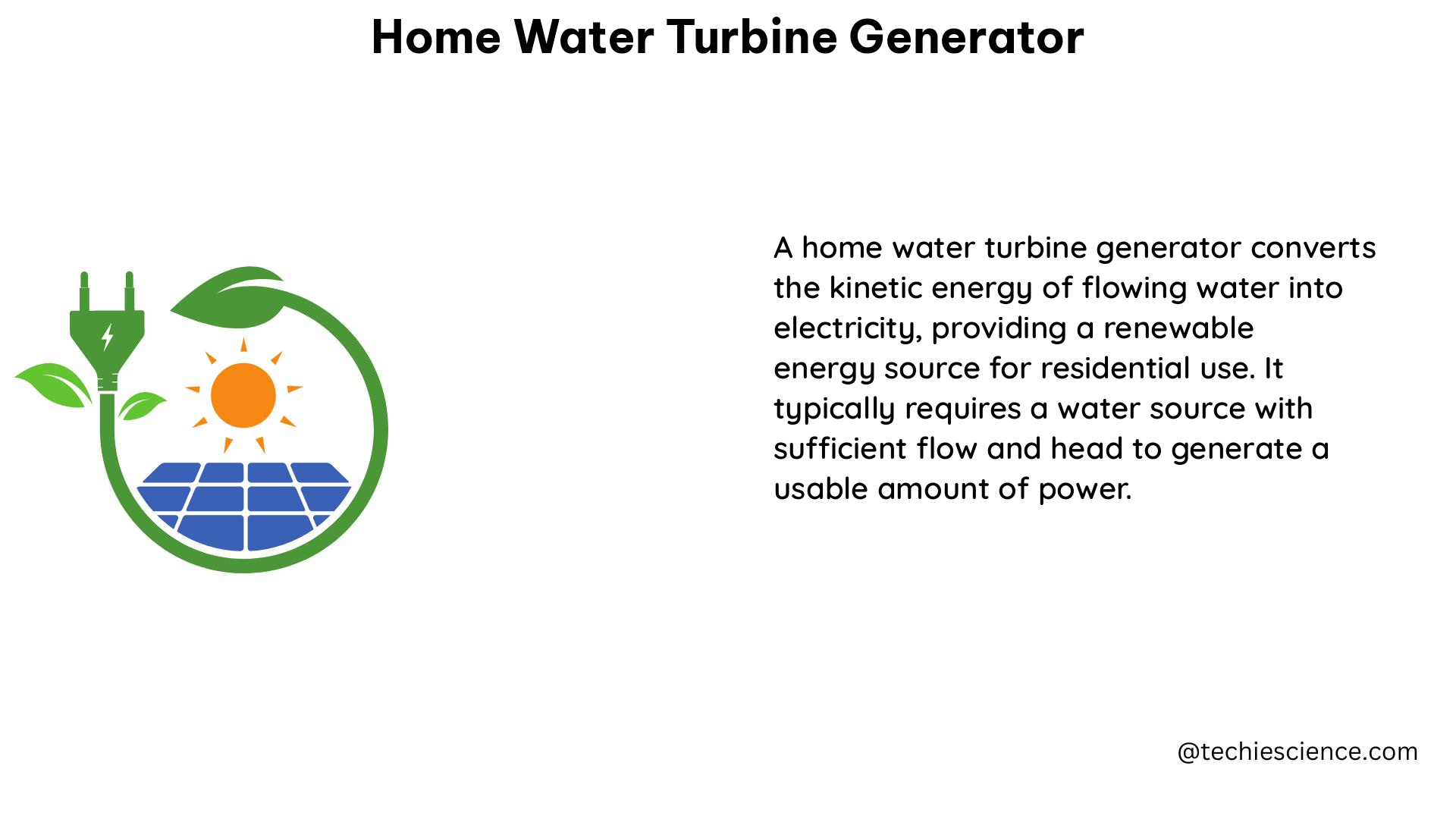Home water turbine generators, also known as micro-hydropower systems, can be an efficient and eco-friendly way to generate electricity using the flowing water on your property. These systems can provide a reliable and renewable source of power, reducing your reliance on the grid and potentially saving you money on your energy bills.
Understanding the Key Factors: Head and Flow
The power output of a home water turbine generator depends on two critical factors: head and flow.
Head: Head refers to the vertical distance that the water falls, typically measured in feet or meters. This vertical drop is what creates the pressure that drives the turbine.
Flow: Flow refers to the quantity of water falling, measured in gallons per minute (gpm) or cubic feet per second (cfs). The higher the flow rate, the more water is available to turn the turbine and generate electricity.
To estimate the power output of a micro-hydropower system, you can use the following formula:
[net head (feet) × flow (gpm)] ÷ 10 = W (Power or Watts)
This formula takes into account the efficiency of the system, which is typically between 50% and 70%.
For example, if you have a stream with a head of 10 feet and a flow rate of 500 gpm, you can calculate the potential power output as follows:
[10 feet × 500 gpm] ÷ 10 = 500 watts
This means that you could potentially generate 500 watts of electricity using this stream. However, it’s important to note that this is just a rough estimate, and the actual power output may be lower due to various losses and inefficiencies in the system.
Turbine Types and System Specifications

Micro-hydropower systems can vary widely in their technical specifications, depending on the site conditions and the specific design of the system. Some common types of turbines used in these systems include:
| Turbine Type | Head Range | Flow Range |
|---|---|---|
| Pelton | 50 – 1,500 feet | 5 – 500 gpm |
| Turgo | 50 – 500 feet | 10 – 1,000 gpm |
| Francis | 20 – 600 feet | 50 – 5,000 gpm |
The choice of turbine type will depend on the available head and flow at your specific site. For example, a Pelton turbine would be well-suited for a site with a high head and relatively low flow, while a Francis turbine would be more appropriate for a site with a lower head and higher flow.
In addition to the turbine type, other key specifications of a home water turbine generator system include:
- Generator size: Typically ranging from 1 kW to 100 kW, depending on the power demand and site conditions.
- Penstock (pipe) size: Typically ranging from 4 inches to 24 inches in diameter, depending on the flow rate and head.
- Intake structure: Designed to capture the water and direct it to the turbine, with features like screens and trash racks to prevent debris from entering the system.
- Powerhouse: The structure that houses the turbine, generator, and other electrical components.
- Transmission and distribution: The wiring and equipment needed to connect the system to your home’s electrical system or the grid.
Cost and Feasibility Considerations
The size and cost of a home water turbine generator system will depend on the specific site conditions and the power demand of the user. A typical micro-hydropower system for a home or small farm might cost between $10,000 and $50,000, depending on the size and complexity of the system.
However, it’s important to note that these systems can have a long lifespan and low maintenance costs, making them a cost-effective option for long-term power generation. Additionally, the potential savings on your energy bills can help offset the initial investment over time.
When considering the feasibility of a home water turbine generator, it’s crucial to carefully evaluate the environmental impact of the system and obtain any necessary permits and approvals from local authorities. This may include considerations such as water rights, environmental regulations, and potential impacts on wildlife and ecosystems.
Conclusion
Home water turbine generators can be a viable and sustainable option for generating electricity using the flowing water on your property. By understanding the key factors of head and flow, and selecting the appropriate turbine type and system specifications, you can harness the power of hydroelectricity to meet your energy needs.
However, it’s essential to carefully evaluate the site conditions, costs, and environmental considerations before embarking on a home water turbine generator project. With the right planning and execution, these systems can provide a reliable and renewable source of power for your home or small farm.
References:
- Planning a Microhydropower System | Department of Energy
https://www.energy.gov/energysaver/planning-microhydropower-system - If I installed a small inline turbine at the entrance of the municipal water supply to my home, how much energy could I generate? | Reddit
https://www.reddit.com/r/askscience/comments/y8fhp/if_i_installed_a_small_inline_turbine_at_the/ - Water Turbine – an overview | ScienceDirect Topics
https://www.sciencedirect.com/topics/engineering/water-turbine - Micro-Hydro Power: Is It Right for My Farm? | ATTRA
https://attra.ncat.org/publication/micro-hydro-power-is-it-right-for-my-farm/

The lambdageeks.com Core SME Team is a group of experienced subject matter experts from diverse scientific and technical fields including Physics, Chemistry, Technology,Electronics & Electrical Engineering, Automotive, Mechanical Engineering. Our team collaborates to create high-quality, well-researched articles on a wide range of science and technology topics for the lambdageeks.com website.
All Our Senior SME are having more than 7 Years of experience in the respective fields . They are either Working Industry Professionals or assocaited With different Universities. Refer Our Authors Page to get to know About our Core SMEs.